Inspection Vessel Saimaa
For the past hundred years, Savonlinna has been the home port of the pilot boat and inspection vessel SS Saimaa. The Saimaa’s job was to inspect and map out sailing routes on her namesake lake, but she also ferried many kings, presidents and prime ministers in its time. Nowadays, the Saimaa is an integral part of Savonlinna’s unique museum steamship fleet, and when not carrying VIPs, spends her summers docked behind Riihisaari Museum.
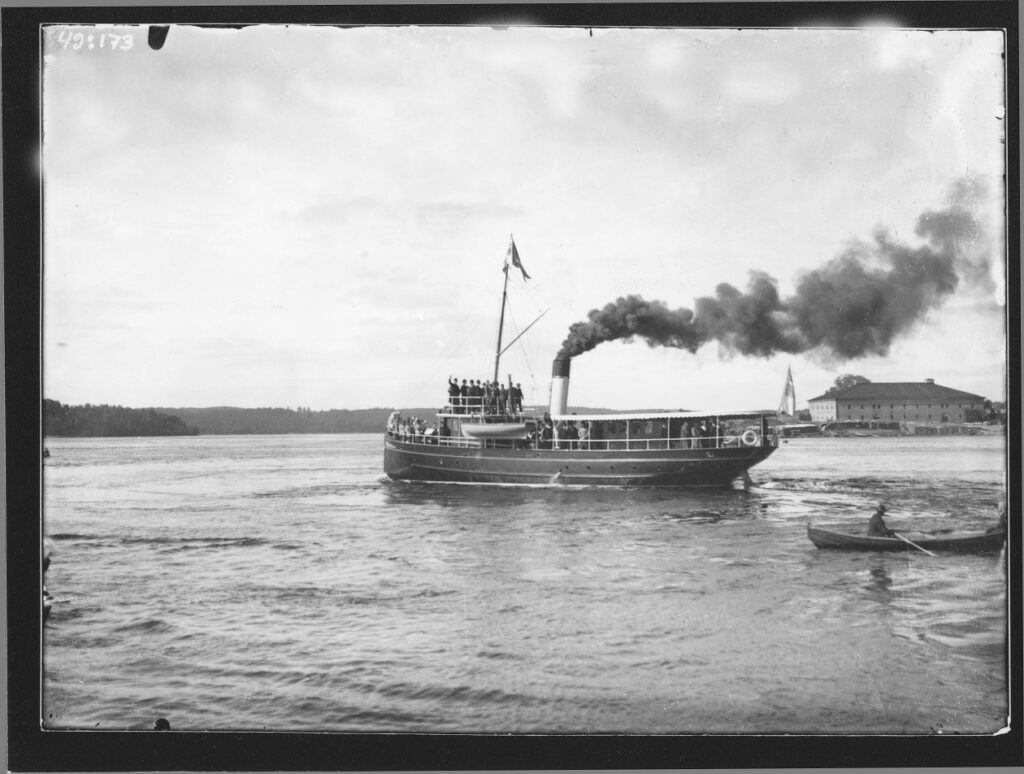
- Built in 1893 at the Crichton & Co shipyard in Turku, Finland.
- Length 24.7 m.
- Width 5.4 m.
- Draft 1.7 m.
- Speed 10 knots.
- Still functional, with a wood-fired steam engine.
The pilot boat and inspection vessel Saimaa sailed out of the Crichton & Co shipyard in Turku in 1893, and settled in her namesake lake that same year. What inspections was it carrying out on Lake Saimaa over 130 years ago? About 40 years earlier in 1856, the construction of the Saimaa Canal had finished, a megaproject costing millions of silver roubles and employing as many as 3000 men at a time. The canal brought more maritime traffic to Lake Saimaa, which led to a greater emphasis on ship safety.
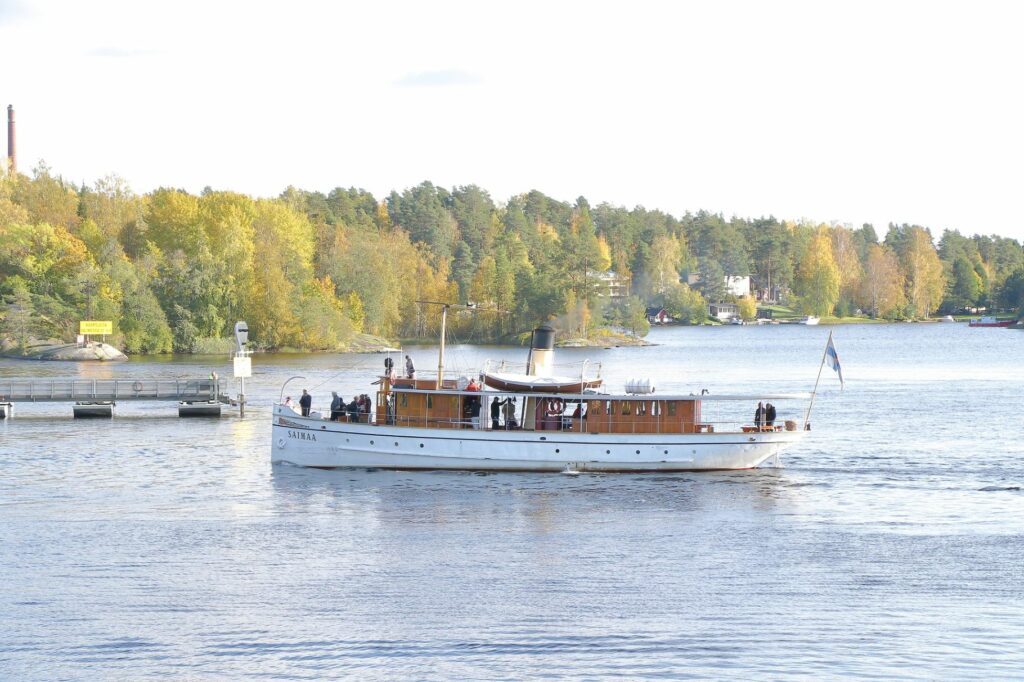
For a long time, it was the dimensions of the Saimaa Canal’s locks (length 35.6 m, width 7.42 m, draft 2.67 m) that defined the maximum size of vessels on Lake Saimaa. However, not every city along the lake’s shores was reachable by every ship that could fit through the canal. Thus began an effort to make Lake Saimaa more navigable, which required a ship.
To start with, they used rental boats or even regular ship traffic to inspect the navigability of routes, until finally pilot major Gustaf Adolf Majander started demanding a brand new ship for the task. In the summer of 1892, the Finnish Senate relented and granted funds for the construction of the SS Saimaa, which was finished on schedule in May 1893.
The SS Saimaa’s homeport was Lappeenranta for the duration of Russian rule. After Finnish independence, she moved to Savonlinna, a logical location given its central position.
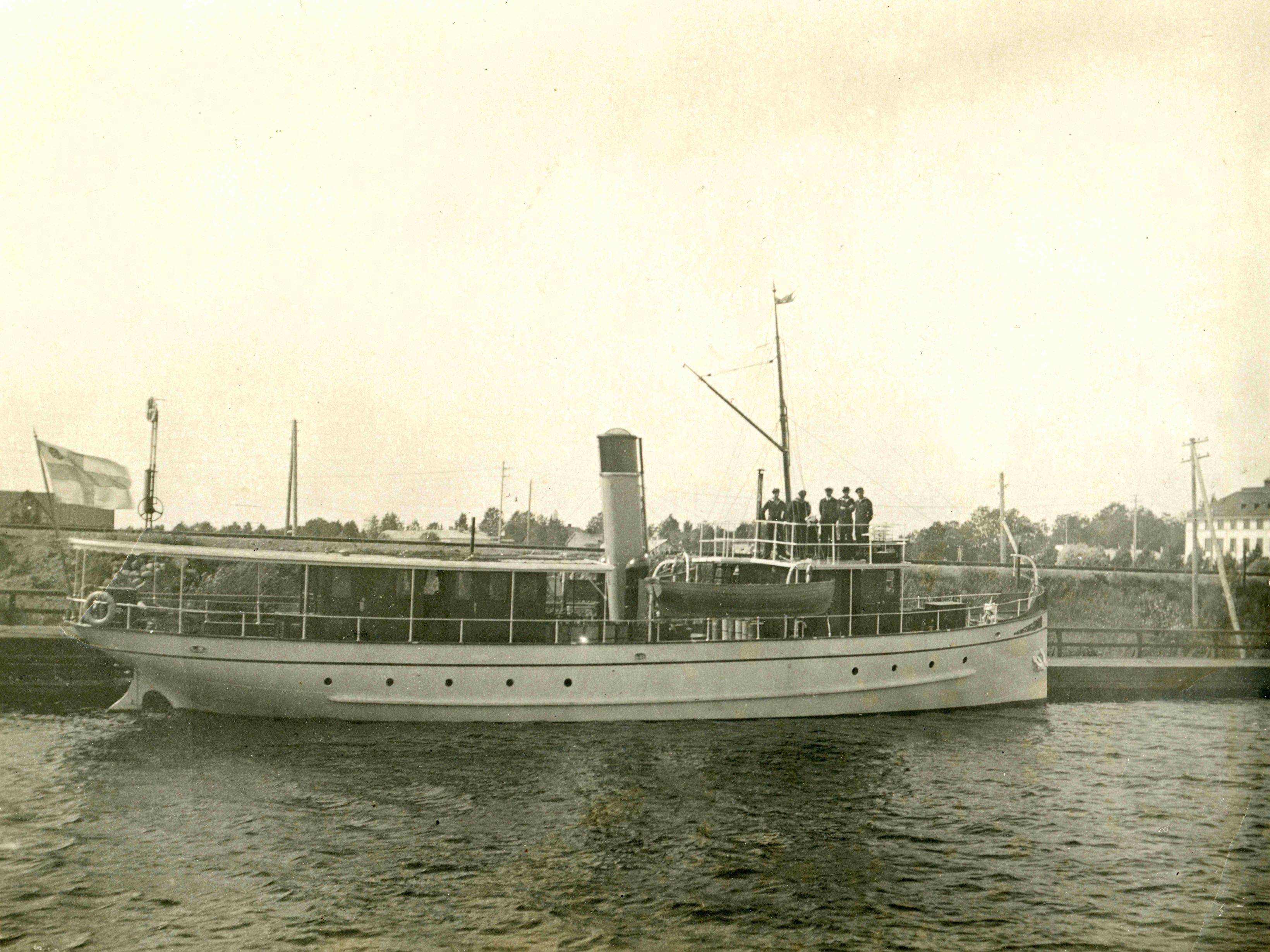
The Saimaa kept working as an inspection vessel until the 1980s. Her crew was tasked with measuring, marking, maintaining and inspecting navigable routes on the lake, as well as their associated signage. Another important mission was the inspection and refuelling of the sector lights.
Sector lights are night-time navigational aids, much smaller than the proper lighthouses used out at sea. They used various types of fuel over the decades that the Saimaa’s crew dutifully hauled over: gasoline, petroleum, gas, batteries, and eventually even solar panels.
The general public was more familiar with the Saimaa’s so-called “nob jobs”. In July 1894 – only her second summer in service – the Saimaa and eight other ships formed an escort squadron for Emperor of Russia Alexander III in the Gulf of Finland. The tsar himself did not board the Saimaa, but she did host his 15-year-old son Grand Duke Michael and his entourage for some time. At one point in the trip, the Saimaa carried the imperial entourage’s used laundry to Turku for washing.
This was only the beginning of the Saimaa’s career in carrying VIPs. Governor-General of Finland Nikolay Bobrikov took her on an inspection tour of eastern Finland in the summer of 1901. In the age of Finnish independence, nearly every Finnish president has been aboard the Saimaa. King Gustaf V of Sweden took a cruise from Savonlinna to Punkaharju with Finnish president Relander in the summer of 1925. Gustaf V’s grandson, Carl XVI Gustaf and his queen Silvia visited the ship in July 1989.
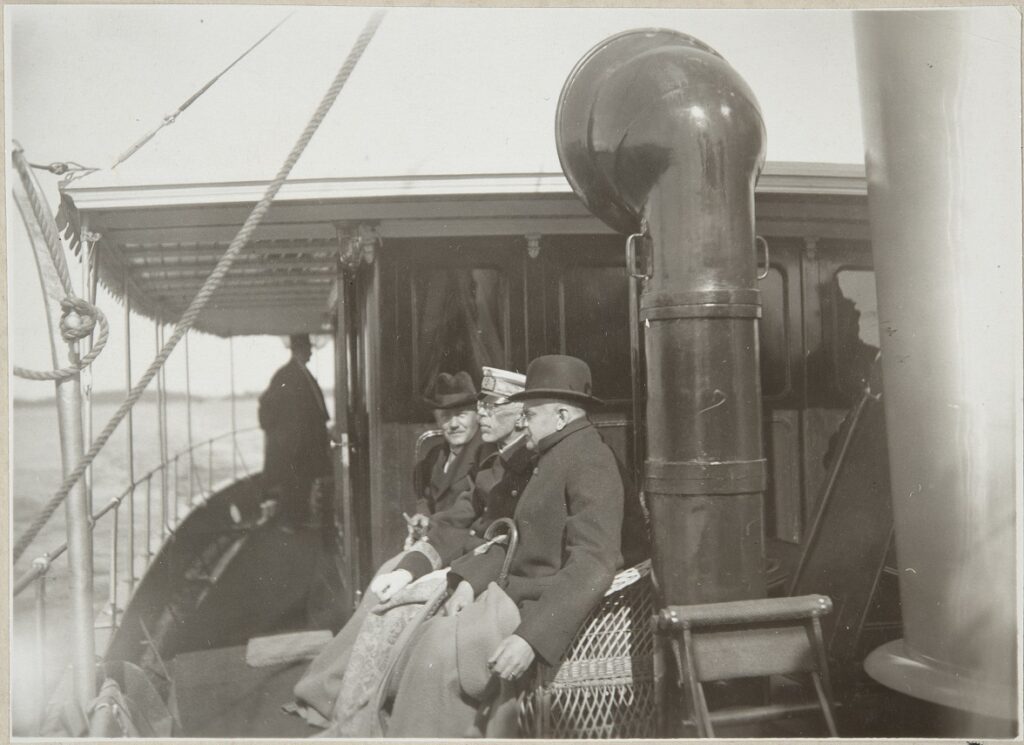
Finnish prime minister Paavo Lipponen toured the lakes with many of his colleagues in the summer of 2001, first with a summit of all Nordic prime ministers, and three weeks later with Russian prime minister Mikhail Kasyanov.
Presidents Sauli Niinistö and Vladimir Putin took the Saimaa on a brief excursion around Savonlinna in July 2017. Their cruise came to a stop at Olavinlinna Castle, where the passengers disembarked for dinner and an opera show. Security was hiked up to unprecedented levels for Putin’s visit, with multiple police boats keeping waterborne rubberneckers away from the presidents.
There have also been some dramatic turns in the Saimaa’s history. She served in the Gulf of Finland in the Continuation War and was attacked by Soviet planes on a few occasions, though no lives were lost. In July 2002, her mast was struck by lightning, shattering it and taking out the ship’s electricity and electronics, but the Saimaa kept on cruising.
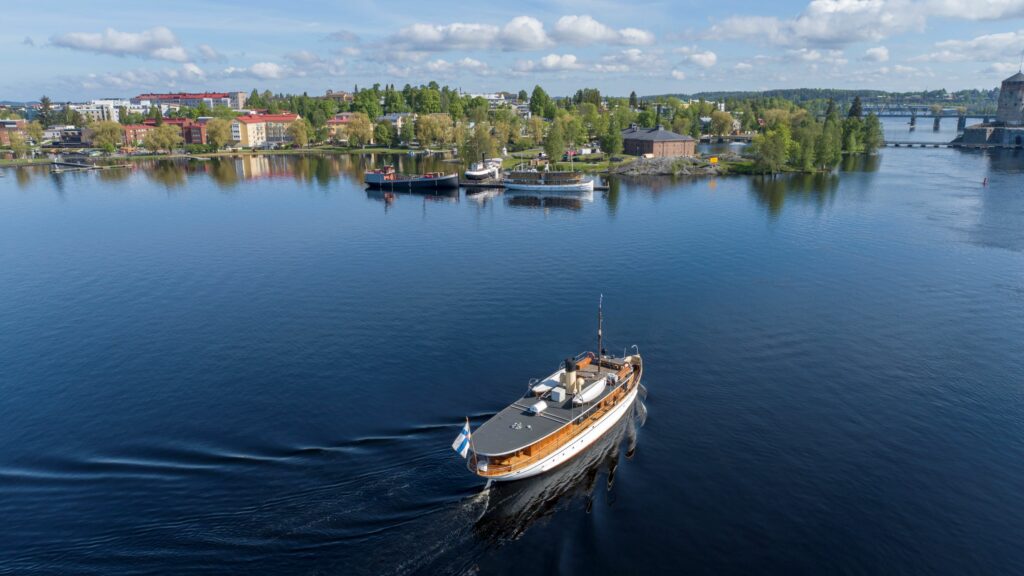
The Saimaa’s long career as an inspection vessel had come to an end by the 1980s. After her retirement, she’s been used for publicity purposes and found work as a museum ship. The Saimaa is now owned by the Finnish government (through the Finnish Heritage Agency).
People have always taken good care of the Saimaa. The grand old steamer remains functional and goes on cruises every summer, her engine fired with good old-fashioned Finnish birch logs. Current plans are to make this notable museum ship even more prominent in the public eye. Savonlinna is still her home port, and she is on display at the dock behind the Riihisaari Museum, an integral part of the city’s unique museum steamship fleet.